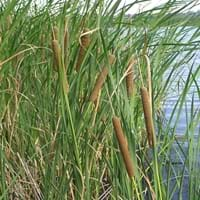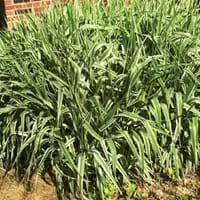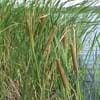Life Span
Perennial
Perennial
Origin
North America, United States, Northeastern United States, Mid-Atlantic United States, Southeastern United States, North-Central United States, Central United States, Western United States, California, Canada
World/Pandemic, Europe
Types
Not Available
not available
Habitat
Bog Garden, Ponds
Lake margins, Open areas, Stream side, Wet ground
USDA Hardiness Zone
3-10
4-8
Sunset Zone
21,22
A1, A2, A3, 1a, 1b, 2a, 2b, 3a, 3b, 4, 5, 6, 7, 8, 9, 10, 14, 15, 16, 17, 18, 19, 20, 21, 22, 23, 24
Habit
Thicket/Colonizing
Mat-forming
Minimum Width
Not Available
Flower Color
Light Yellow, Light Green
Pink, White
Flower Color Modifier
Not Available
Bicolor
Fruit Color
Brown
Not Available
Leaf Color in Spring
Green
White, Green
Leaf Color in Summer
Green
Light Green
Leaf Color in Fall
Green
White, Green
Leaf Color in Winter
Not Available
Brown
Leaf Shape
Flat, Narrow
Ovate
Plant Season
Summer, Fall
Spring, Summer, Fall
Sunlight
Full Sun, Partial Sun
Full Sun, Partial Sun, Partial shade
Type of Soil
Loam, Sand
Clay, Loam, Sand
The pH of Soil
Acidic, Neutral, Alkaline
Acidic, Neutral, Alkaline
Soil Drainage
Poorly Drained
Average
Bloom Time
Early Summer, Summer
Late Spring, Early Summer, Summer, Late Summer
Tolerances
Wet Site
Wet Site, Pollution, Salt, Soil Compaction
Where to Plant?
Ground
Container, Ground, Pot
How to Plant?
Divison, Seedlings
Divison
Plant Maintenance
Medium
Low
Watering Requirements
Needs Very high moisture
Reduce watering in winter, Requires regular watering
In Summer
Lots of watering
Lots of watering
In Spring
Moderate
Moderate
In Winter
Average Water
Average Water
Soil pH
Acidic, Neutral, Alkaline
Acidic, Neutral, Alkaline
Soil Type
Loam, Sand
Clay, Loam, Sand
Soil Drainage Capacity
Poorly Drained
Average
Sun Exposure
Full Sun, Partial Sun
Full Sun, Partial Sun, Partial shade
Pruning
Remove damaged leaves
Prune to stimulate growth
Fertilizers
Nutrient Rich Fertilizer
Doesn't require fertilization when grown in rich soil
Pests and Diseases
Free of serious pests and diseases
Not Available
Plant Tolerance
Drought
Pollution, Salt, Soil Compaction, Wet Site
Flowers
Showy
Insignificant
Flower Petal Number
Not Available
Single
Foliage Texture
Coarse
Medium
Foliage Sheen
Glossy
Matte
Allergy
Mild Allergen
Not Available
Aesthetic Uses
Cut Flowers, Wild gardens
Ground Cover, Showy Purposes
Beauty Benefits
Not Available
Not Available
Environmental Uses
Air purification
Air purification, Food for insects
Medicinal Uses
anticoagulant, Diuretic, Haemostatic, Miscellany
Not Available
Part of Plant Used
Flowers, Leaves, Root, Seeds, Stem
Whole plant
Other Uses
Used as a thickener in soups, Used to make biscuits, Used to produce edible oil, Used to yield a sweet syrup
Biodiesel
Used As Indoor Plant
No
No
Used As Outdoor Plant
Yes
Yes
Garden Design
Dried Flower/Everlasting, Wildflower
Container, Mixed Border
Botanical Name
TYPHA angustifolia
PHALARIS arundinacea var. picta
Common Name
Narrowleaf Cattail, Lesser Reedmace
Canary Reedgrass, Ribbon Grass
In Hindi
Narrowleaf Cattail
Ribbon Grass
In German
Schmalblättriger Cattail
rohrglanzgras
In French
Narrowleaf Cattail
roseau
In Spanish
Espadaña de hoja estrecha
hierba cinta and pasto cinto
In Greek
στενόφυλλα Cattail
κορδέλα Grass
In Portuguese
Narrowleaf Tifa
caniço-malhado
In Polish
Wąskolistne Cattail
Wstążka Trawa
In Latin
Cattail glaucescens
Ribbon Grass
Phylum
Magnoliophyta
Magnoliophyta
Class
Liliopsida
Liliopsida
Clade
Angiosperms, Commelinids, Monocots
Angiosperms, Commelinids, Monocots
Tribe
Not Available
Not Available
Subfamily
Not Available
Not Available
Number of Species
Not Available
Not Available
Importance of Narrowleaf Cattail and Ribbon Grass
Want to have the most appropriate plant for your garden? You might want to know the importance of Narrowleaf Cattail and Ribbon Grass. Basically, these two plants vary in many aspects. Compare Narrowleaf Cattail and Ribbon Grass as they differ in many characteristics such as their life, care, benefits, facts, etc. Every gardener must at least have the slightest clue about the plants he wants to plant in his garden. Compare their benefits, which differ in many ways like facts and uses. The medicinal use of Narrowleaf Cattail is anticoagulant, Diuretic, Haemostatic and Miscellany whereas of Ribbon Grass is Not Available. Narrowleaf Cattail has beauty benefits as follows: Not Available while Ribbon Grass has beauty benefits as follows: Not Available.
Compare Facts of Narrowleaf Cattail vs Ribbon Grass
How to choose the best garden plant for your garden depending upon its facts? Here garden plant comparison will help you to solve this query. Compare the facts of Narrowleaf Cattail vs Ribbon Grass and know which one to choose. As garden plants have benefits and other uses, allergy is also a major drawback of plants for some people. Allergic reactions of Narrowleaf Cattail are Mild Allergen whereas of Ribbon Grass have Not Available respectively. Having a fruit bearing plant in your garden can be a plus point of your garden. Narrowleaf Cattail has showy fruits and Ribbon Grass has no showy fruits. Also Narrowleaf Cattail is not flowering and Ribbon Grass is not flowering . You can compare Narrowleaf Cattail and Ribbon Grass facts and facts of other plants too.





